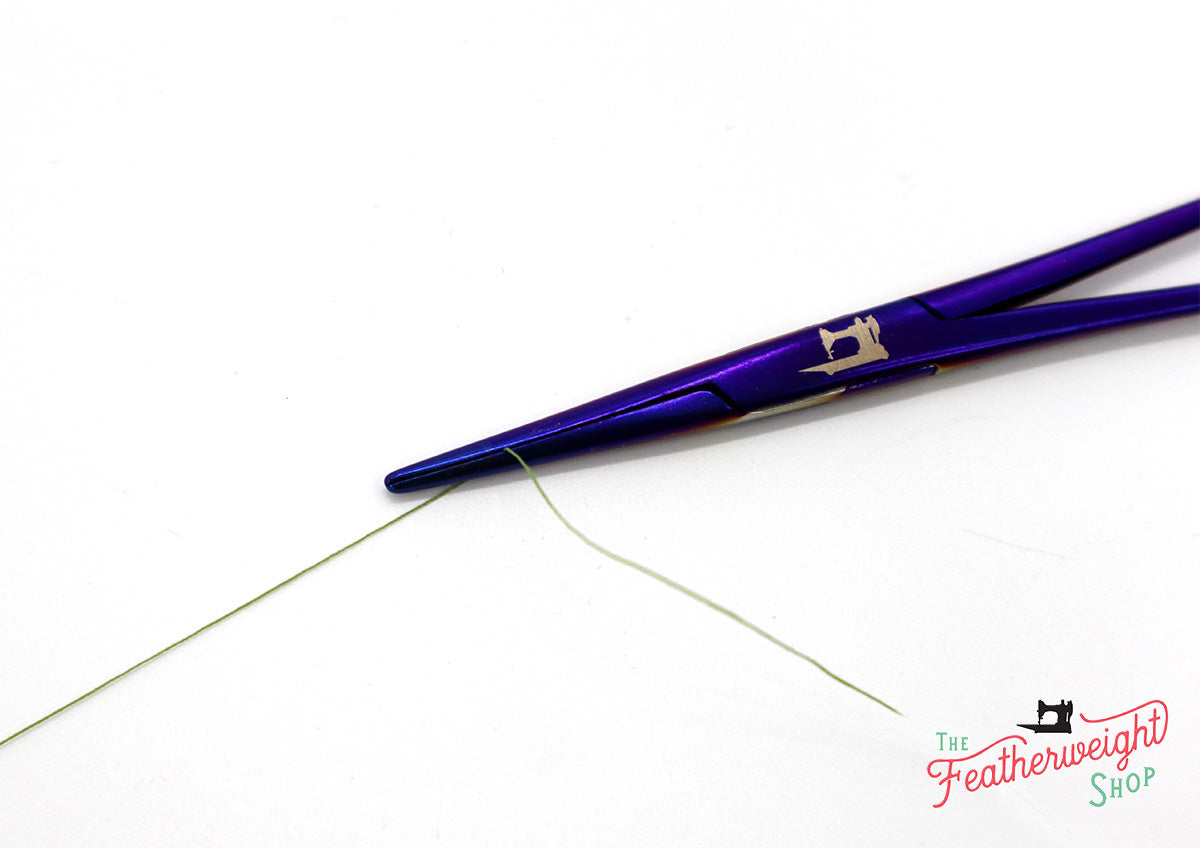Why Is My Singer Featherweight Sewing Slowly?
Vintage Singer Featherweight sewing machines are widely known for their straight stitches, speed, and reliability. But, as you sew, a sluggish or slow sewing machine is a sure sign that something is amiss. Fortunately, simple tools and a little Singer know-how can quickly remedy the most common causes of a slow motor. Today, we'll review these possible issues and how to solve them.

Products Recommended:
Singer Featherweight Maintenance Handbook
Thread Jam Removal Tool
Thread-O-Stat
Sew-Retro Sewing Machine Oil
Superbelt
You may notice that your machine doesn't sew with as much vigor as it used to, or you may acquire a vintage Featherweight that sews with less gusto than you expected. But don't just chalk it up to the age of the machine! When your machine begins to sew slower than usual, the culprit may be a mechanical, electrical, or motor issue. The most common problems with a slow sewing Featherweight are:
- An old motor not operating at full functionality.
- An improperly fitted belt.
- A thread jam.
- Old varnish in the oiling ports.
Start your troubleshooting process by attempting to turn the handwheel towards your body. If the handwheel is challenging to turn, the issue is likely mechanical - for example, a thread jam. If the handwheel turns smoothly, try removing the belt to see if the motor spins freely. If it does spin freely, the culprit is likely your belt! Otherwise, you may need to check the oil ports and see if they are clogged with old oil. Keep reading for more details about how to resolve each of these issues:
Belts:
Belts that are too tight add unnecessary resistance while the motor is spinning. On the other hand, a loose belt may slip and not stay in contact with the pulley or the handwheel. Older, stiffer reproduction belts can slow the machine down, as well.
The most straightforward remedy to address belt-related issues is to swap out your old belt for The Featherweight Shop's Superbelt - a softer, faster replica of the original Singer Featherweight belt. In addition, the motor can work more efficiently by the Superbelt putting less strain and resistance on the motor. Learn how to remove and install the Singer Featherweight belt here correctly.
Thread Jams
Commonly found behind the hook assembly, motor pulley, or handwheel, even a tiny piece of thread can get caught and create enough resistance to slow down your Featherweight or jam it completely. Therefore, removing and thoroughly inspecting each area for even the teeniest piece of thread may help increase your Singer Featherweight's speed.
Tip: The Thread-O-Stat comes in handy while inspecting for thread jams in hard-to-reach areas!
To check the hook assembly, use the Thread Jam Removal Tool to remove any stuck threads or thread jams. Read the full tutorial here.
To check behind the motor pulley, follow our guide "How to Remove and Install a Singer Featherweight Belt" up to the point of removing the motor pulley, at which point you can easily inspect for and remove any errant thread pieces!
To do the same for the hand wheel, you can review our instructions on removing a stuck stop-motion knob.
The Buildup of Old Oil
Another cause of a sluggish machine may be the buildup of varnish from years of old or incorrect sewing machine oil usage. You can place a tiny bit of Kerosene or Triflow in each oiling port to break down the old varnish.
Read about how to oil your Singer Featherweight Sewing Machine here.
After checking the oiling ports, use Sew-Retro Sewing Machine Oil, specially formulated for all sewing machines (including the Singer Featherweight) to maintain your machine. You can find the color-coded oiling chart in the back of your Singer Featherweight Maintenance Handbook.

Oiling instructions, step-by-step, on pages 20-29.
If, after checking all these areas, your machine is still sewing slowly, don't hesitate to contact us, because it may be time to assess whether or not your Featherweight motor needs rewound.

We are always happy to troubleshoot further!


